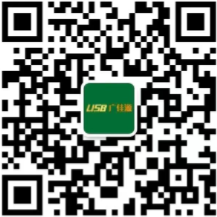 Mr. Chen:136-6225-2835
Mr. Chen:136-6225-2835
 Miss Chen:189-2385-0895
Miss Chen:189-2385-0895
Shenzhen Guangjiayuan Electronic Technology Co., Ltd
Mr. Chen: 136-6225-2835 (same WeChat account)
QQ: 979285705
Miss Chen: 189-2385-0895 (same WeChat account)
QQ: 2391552662
Chen Weiting :135-3824-4786 (same WeChat account)
Chen Weihao: 139-2459-4393 (same WeChat account)
Tel: 86-0755-33182327
Email: gjydz88@163.com
Website: www.usb-type.com
Address: Building 10, Hongxing Gebu Qixiang, Songgang Town, Bao'an District, Shenzhen, Guangdong Province
With the USB type-c connector, users can charge their laptops and connect them to monitors, speakers, storage devices, or headphones through the same connector. By utilizing USB power transfer (PD), many previously separated functions can now be integrated into the same connector. The USB PD protocol allows a current of 5A to be provided to the sending or receiving devices. The USB type-c connector ecosystem can meet the constantly changing needs of modern platforms and devices, and is in line with the trend of smaller, thinner, and more lightweight appearance design. In addition, modifying USB PD for type-c connectors can help meet the needs of high power consuming applications.
This white paper introduces USB type-c and USB Power Delivery (PD), and explores their various applications as well as data and power requirements.
1. In terms of the USB type-c specification, typical data and power roles in terminal devices may change.
Applications that require a transmission rate higher than 480Mbps for the first generation (ultra high speed) and second generation (ultra high speed+) of USB 3.1 will need to utilize either the first generation (ultra high speed) or the second generation (ultra high speed+) of USB 3.1.
3. Compared to the USB type-a and type-b connectors, the USB type-c connector contains several new pins in terms of pin arrangement and reversibility.

Introduction: You may have heard of USB type-c reversible cables. However, when you consider the requirements of a specific system, you may not be sure which are "must be met" and which are only "best met". In this white paper, we will introduce the most basic USB type-c applications, and then further introduce the fully functional USB type-c and USB PD applications. Firstly, let's review the evolution of USB data from USB 1.0 to the second generation of USB 3.1.
Table 1 lists the maximum transfer rates for each USB data transmission related specification. The USB 1. standard is the earliest version that supports 1.5Mbps (low speed) and 12Mbps (full speed), and the later developed USB 3.1 second-generation standard supports 10Gbps (ultra high speed+).
Table 1. USB specifications and maximum voltage, current, and power.
Table 2 shows the evolution of USB power from USB 2.0 to USB PD 3.0. The overall trend is that as the demand for platforms and devices continues to grow, the maximum power continues to increase. Without the use of USB PD, only USB type-c can support up to 5V voltage (current 3A, power 15W). However, when using a USB PD, it can support up to 20V voltage (5A current, 100W power) in the USB type-c ecosystem.
Table 2. USB specifications and maximum voltage, current, and power.
Although USB type-C may seem complex at first, we believe that in terms of these advantages, it is worthwhile to start learning and researching USB type-C. We hope that through this article, no matter what application you encounter in the future, you will know how to adopt USB type-C in future designs and consider the numerous solutions provided for various USB type-C applications.
Source: Texas Instruments
Contact person:
Mr. Chen 136-6225-2835 (same WeChat account)
Miss Chen 189-2385-0895 (same WeChat account)
Chen Weiting 135-3824-4786 (same WeChat account)
Chen Weihao 139-2459-4393 (same WeChat account)
Address:
Building 10, Hongxing Gebu Qixiang, Songgang Town, Bao'an District, Shenzhen, Guangdong Province
 |
 |
| Technology 1 | Technology 2 |